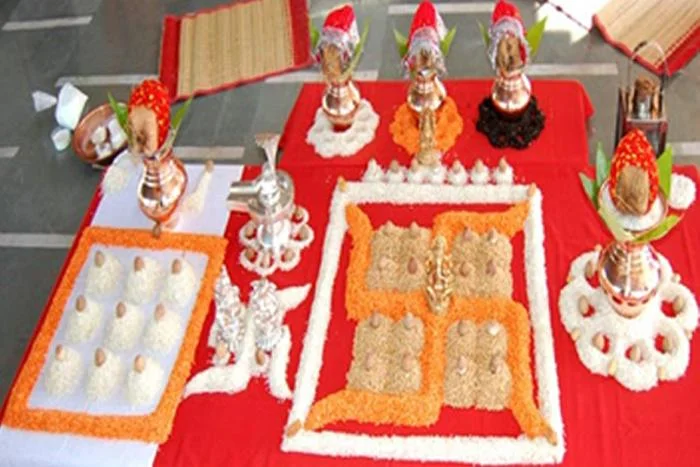Mangal Puja, an auspicious Vedic ritual, holds significant importance in the holy city of Ujjain. Known for its rich cultural and spiritual heritage, Ujjain attracts thousands of devotees who seek to perform the Mangal Puja to appease the planet Mars (Mangal) and remove obstacles related to it. This ritual is especially significant for those who have Mangal Dosha in their horoscope, as it is believed to mitigate the adverse effects and bring peace and prosperity.
In this comprehensive guide, we explore the importance of Mangal Puja in Ujjain, its religious and astrological significance, the process of performing the Puja, and the best time to undertake this spiritual journey.
Significance of Mangal Puja in Ujjain
The city of Ujjain is one of the seven most sacred cities (Sapta Puri) in Hinduism and is home to the famous Mahakaleshwar Jyotirlinga. Mangal Puja in Ujjain is performed at the Shri Mangalnath Temple, which is considered the birthplace of the planet Mars according to Hindu mythology. As a result, Ujjain holds a special place in the hearts of those facing Mangal Dosha or related planetary afflictions.
Mangal Dosha, also known as Kuja Dosha, occurs when Mars is positioned in specific houses of the horoscope, causing delays in marriage, financial instability, and even health issues. By performing the Mangal Puja in Ujjain, devotees seek to pacify Mars and invite positivity into their lives. The ritual is believed to nullify the malefic effects of Mars, ensuring a happy, prosperous, and harmonious life.
Why Perform Mangal Puja in Ujjain?
There are several compelling reasons why Ujjain is considered the most auspicious place to perform Mangal Puja:
- Historical and Religious Significance: Ujjain is not only a pilgrimage center but also one of the oldest cities in India. The Mangalnath Temple is renowned for offering relief to those suffering from Mangal Dosha. The location’s connection with the planet Mars makes it the ideal place to seek divine intervention.
- Astrological Importance: For individuals whose astrological charts indicate a strong Mangal Dosha, performing this Puja in Ujjain is considered more powerful. The Vedic rituals performed in the Mangalnath Temple are in accordance with the ancient texts, which enhances the efficacy of the Puja.
- Spiritual Atmosphere: Ujjain is a spiritual hub, offering an atmosphere conducive to meditation and worship. The serene surroundings of the temple, combined with the energy of the Puja, help devotees focus on their spiritual goals and connect with the divine.
How is Mangal Puja Performed?
The Mangal Puja is a meticulously conducted Vedic ritual, performed under the guidance of learned priests who specialize in astrology and the effects of planetary movements. Here is a step-by-step guide to how the Mangal Puja is conducted in Ujjain:
1. Sankalp (Taking the Vow)
The ritual begins with the devotee taking a Sankalp, or vow, in front of the deity. This involves stating the purpose of the Puja, the obstacles faced, and the desired outcome. The Sankalp is made while holding sacred items such as flowers and grains.
2. Invocation of Deities
The priest invokes Lord Ganesha, the remover of obstacles, to ensure that the Puja is conducted without any hindrance. This is followed by the invocation of Lord Shiva and the planetary deity Mars (Mangal) to seek their blessings.
3. Recitation of Mantras
The recitation of Mangal Mantras is a crucial part of the Puja. These powerful chants are repeated several times to strengthen the connection with the deity and invoke divine blessings. The mantras are recited while offering flowers, rice, and other sacred items to the deity.
4. Offering to Mars (Mangal)
During the Puja, offerings such as red flowers, red lentils (Masoor Dal), Jaggery, and sweets are made to Mars. These items are considered auspicious and are believed to please the planet Mars. The priest also performs Havan (sacred fire ritual), where ghee and other offerings are poured into the fire while chanting Mangal Mantras.
5. Aarti and Prasad Distribution
After the completion of the Havan, the priest performs an Aarti, a traditional worship ceremony where lighted lamps are offered to the deity. The Aarti signifies the culmination of the Puja and is accompanied by the distribution of Prasad (sacred food) to the devotees, symbolizing divine blessings.
When is the Best Time to Perform Mangal Puja in Ujjain?
The timing of the Mangal Puja is critical to its success. The most auspicious day to perform this Puja is Tuesday, the day ruled by the planet Mars. However, certain Nakshatras (constellations) and Tithis (lunar days) are also considered favorable for performing the Puja. The priests at the Mangalnath Temple can guide devotees in selecting the most suitable date based on their astrological chart.
Additionally, performing the Puja during the Mangal Udaya, the time when Mars is in ascendance, enhances the ritual’s potency. It is advisable to consult an experienced astrologer to determine the best time based on individual horoscopes.
Benefits of Mangal Puja in Ujjain
The benefits of performing Mangal Puja in Ujjain are multifaceted. From an astrological perspective, the Puja helps mitigate the harmful effects of Mangal Dosha, which can lead to issues in marital life, financial instability, and health problems. The key benefits include:
- Harmonious Relationships: One of the most significant outcomes of Mangal Puja is the resolution of marital conflicts. For individuals facing delays or disturbances in marriage, this Puja can help bring about timely and harmonious unions.
- Financial Stability: Mars is associated with energy, action, and ambition. By performing Mangal Puja, devotees can remove obstacles in their career or business, leading to financial stability and growth.
- Health Improvements: Mars governs aspects of health such as blood, muscles, and vitality. The Puja is believed to alleviate health issues caused by planetary afflictions, improving overall well-being.
- Spiritual Growth: Performing the Puja in a sacred place like Ujjain not only addresses worldly concerns but also fosters spiritual growth. The serene environment and the powerful rituals help devotees attain mental peace and clarity.
Preparing for Mangal Puja in Ujjain
Before traveling to Ujjain to perform Mangal Puja, it is essential to prepare both mentally and physically. Some practical tips include:
- Consult an Astrologer: It is recommended to consult a trusted astrologer to understand your horoscope and determine if Mangal Puja is necessary. The astrologer can also suggest the best time and date for performing the ritual.
- Book a Priest in Advance: Due to the popularity of the Mangalnath Temple, it is advisable to book a priest ahead of time to ensure that the Puja is performed smoothly.
- Follow Spiritual Disciplines: Observing fasts, avoiding non-vegetarian food, and practicing cleanliness before the Puja can enhance the ritual’s effectiveness.
Conclusion
Mangal Puja in Ujjain offers a powerful and spiritually fulfilling experience for those seeking relief from the adverse effects of Mangal Dosha. The ritual not only resolves personal and professional challenges but also deepens the devotee’s connection with the divine. Performing the Puja in the sacred city of Ujjain, with its rich spiritual heritage, amplifies the blessings and ensures peace, prosperity, and happiness in life.


